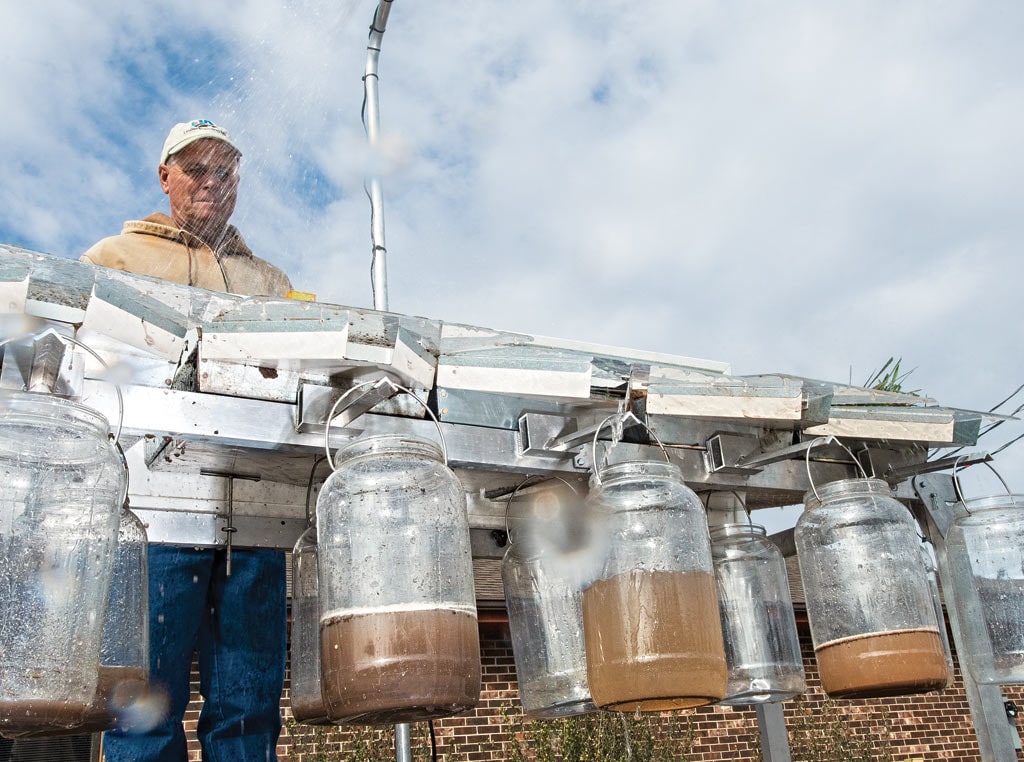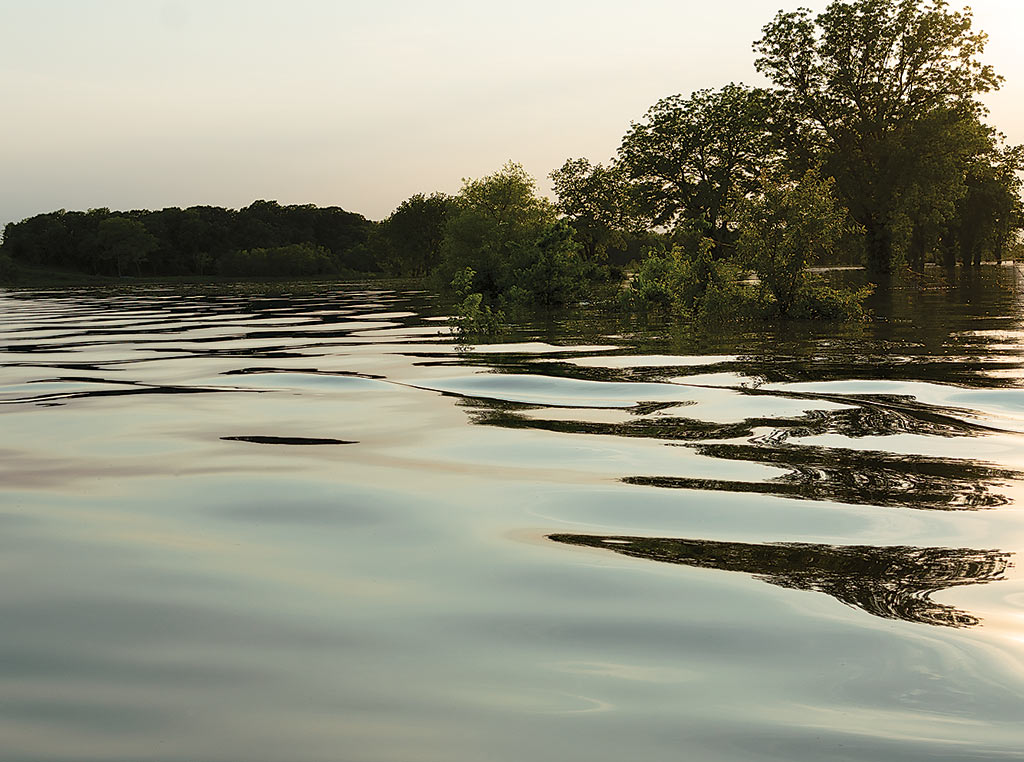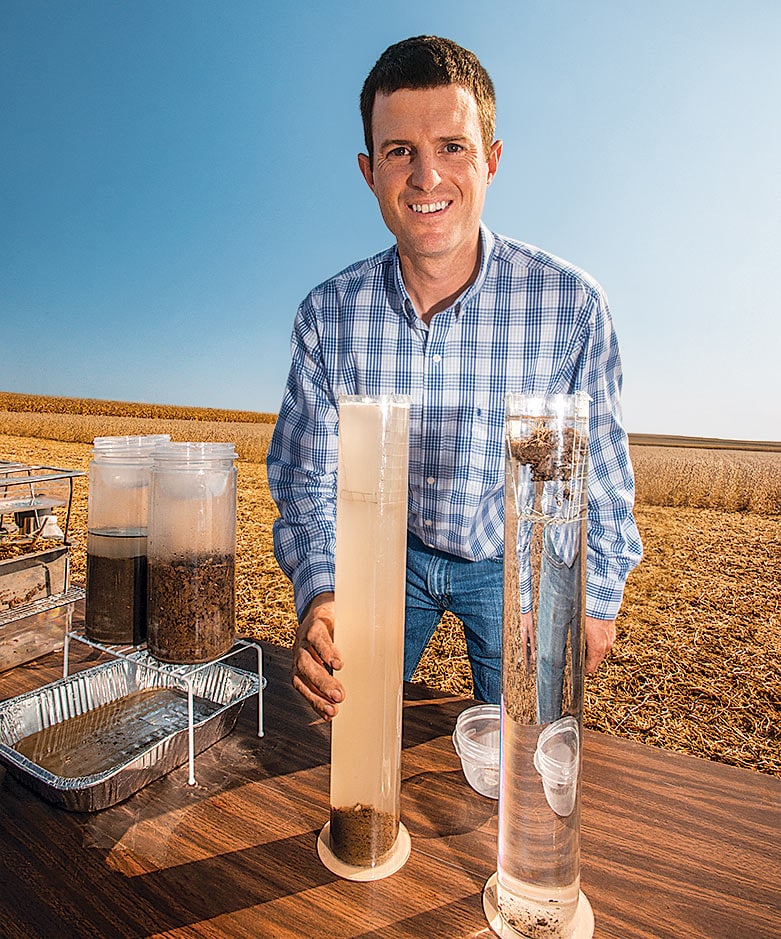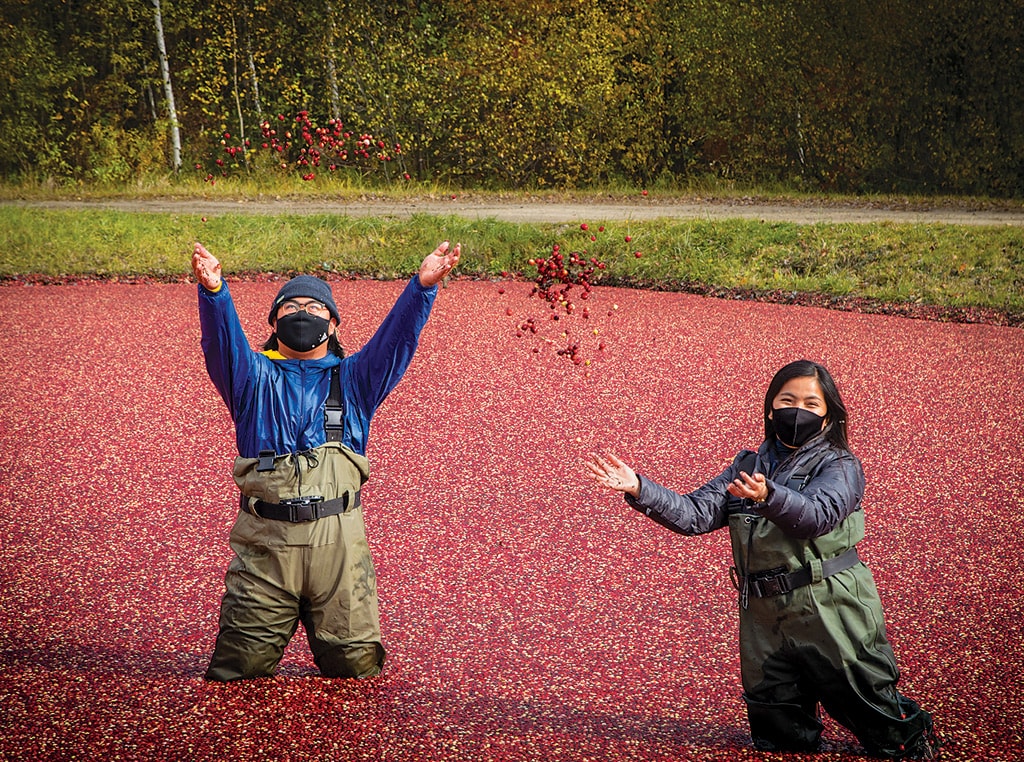
Shane New uses rainfall simulator to demonstrate how farming practices include surface residue cover, no-till & cover cropping impact runoff (front jugs) & infiltration (back jugs) from heavy rainfall
Agriculture, Sustainability March 01, 2021
Infiltration's Impact
Healthy soil will have ripple effects on extreme weather events.
Let this soak in—with a 1% increase in soil organic matter, U.S. cropland could take in and store the same amount of water as flows over Niagara Falls in 150 days. That’s at an average flow rate over the falls of 750,000 gallons per second.
This astonishing fact—courtesy of NRCS—is what has that agency, and a host of other government and private entities, so intent on helping farmers improve soil health. The resulting improvement in organic matter levels and soil structure would allow soils to absorb and hold more water.
“Healthy soil acts like a sponge and can alleviate the devastating floods and torrential rains that have become more frequent,” says Andrea Basche, assistant professor of agronomy and horticulture at the University of Nebraska. “And, the stored water will then help crops outlast droughts to stabilize farm income.”
Basche previously worked with researchers from the Union of Concerned Scientists in evaluating the results of 89 global studies into rainfall infiltration and storage with different farming systems. “We found that having living roots in the soil (as with cover cropping and perennial planting) had the greatest benefit. The perennial grass program increased water infiltration by 59% and cover cropping had 35% greater water absorption,” she says.
A computer model was used to apply those findings to one Iowa watershed. The results showed that runoff in flood events would be reduced by 20% and 16% more water would be stored in the soil.
Currently, Basche is monitoring changes in soil health indicators on 17 Nebraska farms as part of the state’s Soil Health Initiative. “We’re comparing no-till systems with and without cover crops. We recently analyzed water infiltration on four farms and found cover crops increased initial infiltration an average of 59%,” she says.
Building healthy soil. Nebraska NRCS Soil Health Specialist Aaron Hird highlights the principles to follow in building healthy soils. “Keep the soil covered, disturb the soil less or not at all, keep a living root in the soil 10 or more months a year, and allow for plant and root diversity,” he says.
Hird adds that following these guidelines allows soil to develop the microbiological activity that produces stable surface aggregates that promote faster infiltration. That soil structure also provides pore space in the soil profile for greater water storage.
“I’ve done infiltration studies on hundreds of fields in Nebraska and in most of those, the soil is absorbing rainfall at a rate of one-half inch per hour. However, long term no-till fields are taking in up to 4 inches per hour and where cover crops have been added to no-till practices the infiltration rate can reach up to 8 inches per hour.”
Basche and Hird point out that healthy soils alone won’t prevent flooding, but when spread across an entire watershed they can have a major impact. “Damage from the ‘bomb cyclone’ event that caused massive flooding on the Missouri River could have been reduced,” says Hird.
Holton, Kansas, stockman Shane New says the soil health and regenerative ag practices employed on his farm have doubled soil organic matter levels—going from roughly 2% to 4%. “Each 1% increase allows the soil to hold an additional 27,000 gallons of water that doesn’t runoff to cause erosion and carry off crop nutrients.” As a partner in Understanding Ag—a regenerative agriculture consulting company—New has also seen the impact on other farms. “We just completed a case study with a farmer who increased his water infiltration rate by 500% in just three years,” he says.

Extreme weather events like floods and droughts have cost an estimated $340 billion in damages in the U.S. since 1980.

Aaron Hird says adopting farming practices that build stable soil aggregates can dampen the impact of those events.
Read More

Agriculture, Ag Tech
Ag Data Is Beautiful
Digital sattellite data paints farm masterpieces.

Agriculture, Specialty/Niche
Year-round Tourism
Muskoka farm develops innovative ways to incorporate four-season tourism attractions.
